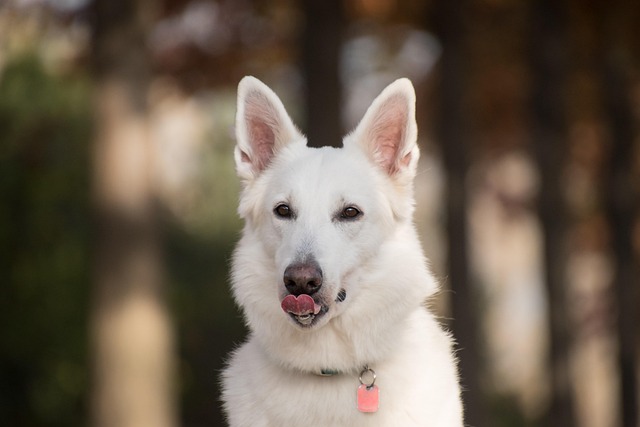
Are Irish setters easy to potty train?
When the Irish setter walks with an elegant pace, its reddish-brown hair shines in the sun, and its lively eyes are full of curiosity and enthusiasm, anyone will be attracted by this unique charm.
When we joyfully welcome a dog into our lives, we might envision a heartwarming scene of playing with it on the grass in the park, where it happily chases a frisbee and brings it back precisely. But many people are curious about how long it actually takes for a dog to learn the seemingly simple skill of fetch. Behind this question, there are many complex and interesting factors at play.
For a dog to learn fetch, it is essentially a process of establishing a conditioned reflex. From a behavioral perspective, dogs are born with the instinct to chase moving objects, which stems from their hunting nature. However, transforming this instinct into a skill of following commands, fetching accurately, and delivering the object to the owner's hand requires guidance and training. Generally speaking, with scientific, systematic, and patient training, some relatively intelligent and trainable dog breeds may initially master the basic essentials of fetch within a few weeks. For example, Border Collies, Golden Retrievers, etc, have a strong ability to understand human commands and are inherently enthusiastic about interacting with their owners. After 15 to 30 minutes of training per day for 2 to 3 weeks, they may start to show a positive response to the fetch command.
However, the training time is not fixed. A dog's age has a significant impact on learning fetch. Puppies are like a blank slate, highly malleable, but they have a short attention span and are easily distracted. For instance, a two-month-old puppy may only be able to maintain a training session for 5 to 10 minutes each time; otherwise, it will be unable to focus due to fatigue or loss of interest. In contrast, although adult dogs may learn new skills a bit more slowly, once they understand the command, their memory will be more solid. An adult Labrador Retriever may progress slowly at the beginning of training, but after about a month of regular training, it can also master the fetch skill proficiently.
 The scientific nature and consistency of the training method are crucial. The positive reinforcement method is one of the most effective ways to train a dog to fetch. When a dog successfully fetches an object and hands it over to the owner, promptly giving it delicious snacks, enthusiastic praise, and gentle strokes will make the dog associate the fetching behavior with pleasant rewards, thus reinforcing this behavior. Conversely, if the owner's commands are inconsistent during the training process, sometimes using "Bring it back" and sometimes using "Fetch it", or if the rewards are not timely and regular, the dog will be confused, and the learning process will be hindered. For example, some owners, when they are busy, do not immediately give a reward after the dog fetches the object. Over time, the dog may lose its enthusiasm for the fetching behavior.
The scientific nature and consistency of the training method are crucial. The positive reinforcement method is one of the most effective ways to train a dog to fetch. When a dog successfully fetches an object and hands it over to the owner, promptly giving it delicious snacks, enthusiastic praise, and gentle strokes will make the dog associate the fetching behavior with pleasant rewards, thus reinforcing this behavior. Conversely, if the owner's commands are inconsistent during the training process, sometimes using "Bring it back" and sometimes using "Fetch it", or if the rewards are not timely and regular, the dog will be confused, and the learning process will be hindered. For example, some owners, when they are busy, do not immediately give a reward after the dog fetches the object. Over time, the dog may lose its enthusiasm for the fetching behavior.
A dog's personality is also a key factor affecting the learning time. Some dogs are lively, curious, and enthusiastic about new games and commands, so they may learn fetch relatively quickly. On the other hand, some dogs are more timid and cautious and need more time to adapt to new environments and commands. For example, a timid Chihuahua may be terrified of the thrown object at the beginning of training and dare not approach it. The owner needs to spend a lot of time patiently guiding it to gradually overcome its fear, and this process may be extended to several months.
During the process of training a dog to fetch, the deep emotional bond between the owner and the dog also plays a huge role. Dogs are social animals and they long for the recognition and love of their owners. When the owner fully engages in the training and establishes trust and an intimate relationship with the dog, the dog will be more willing to cooperate and have stronger learning motivation. Having relaxed and enjoyable interactions with the dog every day, such as playing together and going for walks, can deepen this emotional connection. In training, the dog can keenly sense the owner's tone of voice, expression, and body language. Encouraging and expectant eyes, as well as gentle and firm commands, can all make the dog feel the owner's care and thus learn the fetching skill more actively.
There is no definite answer to how long it takes for a dog to learn fetch. It is comprehensively influenced by various factors such as the dog's breed, age, personality, training method, and emotional relationship with the owner. But no matter how long it takes, this process is a precious experience for the owner and the dog to grow together and establish a deep emotional bond. In every moment of training, whether it is the dog's first brave attempt to pick up the object or finally delivering the object to the owner's hand accurately after countless attempts, those moments filled with laughter and emotion far exceed the meaning of simple skill training. When we accompany the dog step by step towards the moment of learning to fetch, what we gain is endless warmth, trust, and loyalty, which are the most precious gifts that the dog gives us.

When the Irish setter walks with an elegant pace, its reddish-brown hair shines in the sun, and its lively eyes are full of curiosity and enthusiasm, anyone will be attracted by this unique charm.

When the furry little life stumbles into our lives, the soft and sticky cry and wagging tail instantly melt the hearts of countless dog owners. However, behind this sweet companionship, puppy potty training is like a mountain in front of them.

In the steel jungle of the city, more and more people are eager to have a furry companion to add more warmth and companionship to their lives.

Training puppies to develop good house bowel habits is a process that every pet owner looks forward to and is full of challenges. This is not only about the cleanliness of the home environment,

Dog walking is supposed to be a pleasant time for people and dogs to enjoy each other's company, but when the dog drags the leash and rushes around, this beautiful moment is broken.

When a dog suddenly poops in a specific area of the house, it not only causes cleaning troubles but also makes the loving owner feel anxious and helpless.